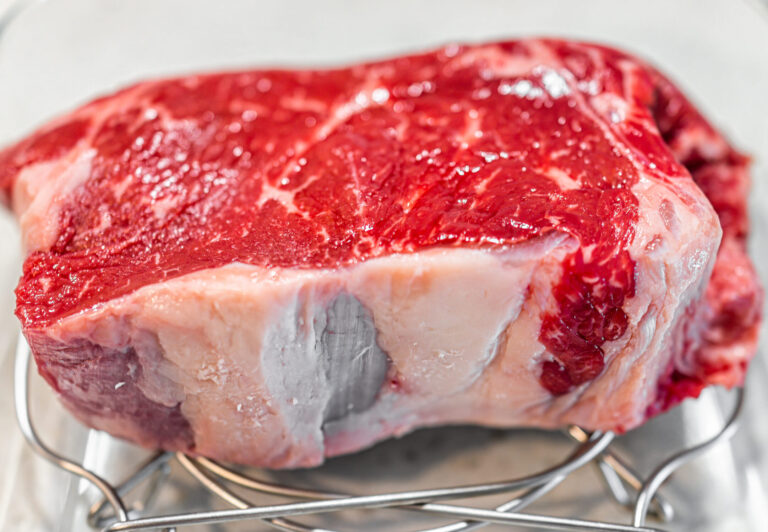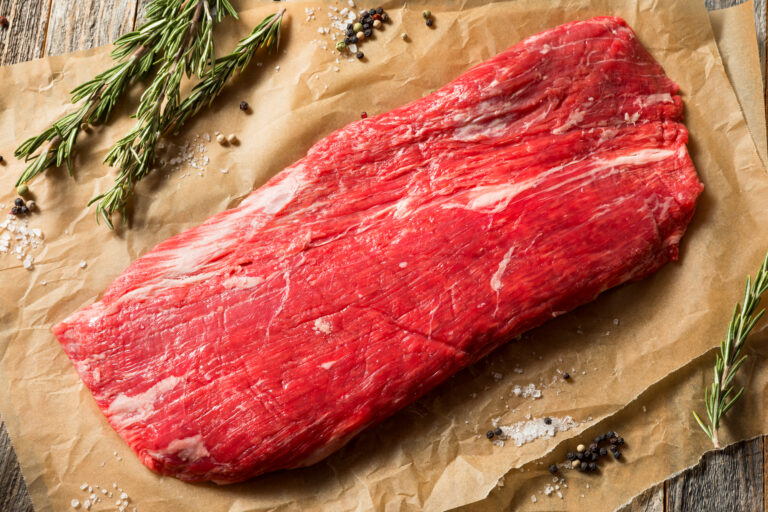7 Mishima Beef Cooking Tips for Perfect Flavor and Texture
Cooking Mishima beef at home involves mastering its unique qualities: marbling for tenderness, rich umami flavor, and using the right tools and techniques to bring out its best.

Imagine elevating your culinary skills with the luxurious texture and flavor of Mishima beef, a prized ingredient among gourmet chefs. With the right tips, you can master the art of cooking this exquisite meat right in your kitchen.
Disclosure: As an Amazon Associate, this site earns from qualifying purchases. Thank you!
What Is Mishima Beef?

Mishima beef comes from a rare cattle breed called Japanese Black, primarily raised on Mishima Island in Japan. It’s known for its extremely limited production, making it one of the most exclusive beef varieties worldwide.
Distinct Features of Mishima Beef
Texture and fat distribution are key highlights of Mishima beef. The meat boasts a unique marbling texture, with fat finely interspersed throughout the muscle, leading to a melt-in-your-mouth experience. This beef often exhibits a richer color compared to more common types, with a bright, vibrant red shade that signifies its freshness and quality.
- Tenderness: The degree of marbling ensures that each bite is exceptionally tender.
- Flavor: It has a deep, rich umami flavor that enhances without overwhelming the palate.
- Texture: The fine marbling results in a smooth texture that enhances the dining experience.
These attributes make Mishima beef highly sought-after among chefs and gastronomes, ensuring that dishes prepared with it are of the highest gourmet standard.
Essential Tools for Cooking Mishima Beef
Recommended Pans and Grills
- Cast Iron Skillet: Perfect for searing Mishima beef, ensuring a beautifully caramelized crust while keeping the interior juicy.
- Grill: Opt for a high-quality charcoal grill that can provide a smoky flavor complementing the richness of the beef.
- Griddle Pan: Ideal for even heat distribution, a griddle pan will cook your steaks evenly, enhancing the beef’s natural flavors.
Thermometers and Other Cooking Gadgets
- Meat Thermometer: Essential for achieving the perfect doneness, a meat thermometer will help you cook your Mishima beef to precision without overcooking.
- Timer: Keep track of cooking times effortlessly to avoid guesswork and achieve consistent results.
- Tongs: Use long-handled tongs for flipping steaks without piercing them, which helps retain the juices.
- Chef’s Knife: A sharp chef’s knife is crucial for clean and effortless slicing, preserving the texture and presentation of your Mishima beef.
- Carving Knife: Specifically for larger cuts, a good carving knife will help you make precise slices without tearing the meat.
Preparing Mishima Beef

Taking your home cooking to the next level involves mastering the art of preparing Mishima beef. Let’s delve into how to select, store, and season this luxurious ingredient for optimum results.
Selecting the Right Cut
Choosing the proper cut of Mishima beef is crucial for your dish’s success:
- Steaks: Opt for cuts like ribeye or sirloin, which are known for their marbling and tenderness.
- Slow Cooking: Select cuts like brisket or shoulder, ideal for braising or stewing.
- Grilling: Choose thicker cuts such as T-bone or porterhouse, perfect for achieving a charred, smoky flavor.
Handling and Storing Mishima Beef Safely
Proper handling and storage are key to maintaining the quality of Mishima beef:
- Refrigeration: Store the beef in the coldest part of your refrigerator, ideally between 32°F and 34°F (0°C to 1°C).
- Freezing: If you must freeze Mishima beef, wrap it tightly in plastic wrap and then place in a freezer bag, squeezing out as much air as possible.
- Thawing: Always thaw Mishima beef in the refrigerator, not at room temperature, to prevent bacterial growth.
- Salt: Season with sea salt or kosher salt before cooking to enhance the beef’s umami flavor.
- Herbs and Spices: Use subtle herbs such as thyme, rosemary, and black pepper to complement, not overpower, the delicate taste of Mishima beef.
- Marinades: For tougher cuts, consider a marinade with acidic components like vinegar or lemon juice to tenderize the meat without masking its natural flavors.
Cooking Techniques for Mishima Beef
Delve into the art of cooking Mishima beef with these specialized techniques tailored to enhance its unique flavor and texture.
Pan-Searing for Optimal Taste
Start by heating a high-quality, heavy skillet over medium-high heat until it’s hot. Add a small amount of oil that has a high smoke point to avoid burning. Place your Mishima beef cuts in the pan, ensuring they don’t overlap. Sear each side for about 3-4 minutes for a perfect crust. This method unlocks a rich, savory flavor in steaks, key for enhancing the beef’s fine marbling. Rest the meat for a few minutes before serving to retain its juices.
Grilling Tips for Perfect Doneness
Preheat your grill to high. Brush the grates and your Mishima steaks lightly with oil to prevent sticking. When grilling, keep a close eye on the heat – Mishima beef is best cooked over medium-high heat. For optimal taste and texture, aim for medium-rare doneness, which typically requires about 4-5 minutes per side depending on thickness. Use a meat thermometer to check for an internal temperature of around 135°F (57°C) before resting the meat for about 5 minutes.
Slow Cooking Methods
For tougher cuts, slow cooking is ideal. Place your seasoned Mishima beef, along with flavors like garlic, onions, and a liquid base (stock, wine, or water), into a slow cooker. Set it to low and cook for several hours until the beef is tender. This method is perfect for drawing out intricate flavors and tenderizing less marbled cuts, leading to melt-in-your-mouth dishes every time.
Timing and Temperature Control

Mastering the timing and temperature is crucial when cooking Mishima beef to preserve its prestigious quality and flavor.
Understanding the Right Cooking Times
- Steaks: Aim for a quick sear of about 3 to 4 minutes on each side to achieve a perfect medium-rare. This cut requires less cooking time due to its naturally tender quality.
- Slow Cooked Dishes: For braises and stews, cook slowly over low heat—typically 2 to 3 hours—allowing the beef’s rich flavors to develop thoroughly.
- Roasts: Cook roasts in a preheated oven at 350°F (175°C) for about 15 to 18 minutes per pound, checking periodically to prevent overcooking.
- Thicker Cuts (like roasts): Utilize lower temperatures for a longer duration to promote even cooking without drying out the meat.
- Thinner Cuts (such as steaks): High temperatures are ideal for searing the outside efficiently while keeping the inside juicy and tender. Preheat your cooking surface to around 400°F – 450°F (204°C – 232°C) for optimal results.
- Tougher Cuts (like chuck): Best cooked at low temperatures (about 275°F – 325°F, 135°C – 163°C) in a slow cooker or oven, where prolonged heat can break down tougher muscle fibers, enhancing tenderness and moisture retention.
Serving Mishima Beef
After mastering the cooking techniques for Mishima beef, presenting it in the best possible way is crucial to enhancing your culinary experience. This section will guide you on the ideal accompaniments and presentation ideas that complement the luxurious flavors of this premium beef.
- Select Fine Wines: Opt for a robust red wine like Cabernet Sauvignon or a delicate Pinot Noir to balance the rich flavors of Mishima beef.
- Choose Subtle Sides: Accompany your beef with sides that don’t overpower its taste. Consider steamed asparagus, sautéed mushrooms, or a light salad.
- Add a Touch of Sauce: Enhance the beef with a minimal drizzle of a reduction sauce made from red wine or a béarnaise sauce to elevate the flavor without masking it.
- Carve at the Table: Make a show of the dinner by carving the beef at the table. It not only adds a touch of elegance but also allows guests to see the perfect doneness of the meat.
- Use Fine China or Stone Plates: Serve Mishima beef on fine china or stone plates. The elegance of these materials complements the exclusivity of the meat.
- Include Edible Garnishes: Garnish with edible flowers or a sprinkle of finely chopped herbs to add color and a hint of fresh flavor, making your dish as visually appealing as it is delicious.
Common Mistakes to Avoid When Cooking Mishima Beef

Mishima beef, renowned for its rich marbling and delicate flavor, requires precise techniques to ensure its qualities are fully appreciated. Here are common pitfalls you should sidestep to master the art of cooking this exquisite meat.
Overcooking the Delicate Meat
Avoid the mistake of overcooking Mishima beef, which quickly diminishes its prized texture and taste. Here’s what to remember:
- Monitor the temperature closely: Use a meat thermometer to ensure you don’t exceed the ideal internal temperature—rare to medium rare is best.
- Reduce cooking time: Given its fine marbling, Mishima beef cooks faster than less fatty meats. Keep a vigilant eye on the clock.
Choosing the Wrong Cooking Methods
Selecting inappropriate cooking techniques can undermine the intrinsic value of Mishima beef. Optimize your approach with these tips:
- Avoid high heat: Slow cooking and gentle searing unlock the flavor without over-hardening the fat.
- Choose the right method: Pan-searing, grilling, and slow-cooking are best to enhance their natural flavors while preserving juiciness.
Incorrect Seasoning Approaches
Improper seasoning can overpower Mishima beef’s natural tastes. To maintain the balance of flavors, consider the following:
- Keep it simple: Salt and pepper might be all you need to accentuate its natural flavors without overshadowing them.
- Be cautious with marinades: If using marinades or strong spices, apply them sparingly and choose ones that complement rather than dominate the beef’s flavor profile.
By sidestepping these common errors, you’ll ensure your Mishima beef remains the star of your culinary creation.
Frequently Asked Questions
What is Mishima beef?
Mishima beef comes from Japanese Black cattle raised on Mishima Island, known for its superior quality and flavor. This type of beef is celebrated for its marbling, tenderness, and distinct taste.
How should Mishima beef be cooked to maintain its quality?
Mishima beef is best cooked using methods that highlight its natural flavors, such as pan-searing, grilling, or slow cooking. It’s crucial to avoid overcooking to maintain the meat’s tenderness and juiciness.
What are the best cuts of Mishima beef for steaking?
For steaks, the best cuts of Mishima beef include ribeye, sirloin, and tenderloin. These cuts are known for their marbling and tenderness, making them ideal for grilling or pan-searing.
What common mistakes should be avoided when cooking Mishima beef?
Avoid overcooking, using incorrect cooking methods, and improper seasoning. These mistakes can lead to tough, flavorless meat. Following correct temperature guidelines and seasoning techniques will help preserve the quality of the beef.
How should Mishima beef be stored?
Mishima beef should be stored in a refrigerator at or below 40°F (4°C). For long-term storage, it can be frozen. Make sure the beef is wrapped properly to prevent freezer burn and preserve its quality.
What are some recommended accompaniments for Mishima beef?
Fine wines, subtle vegetable sides, and complementary sauces, such as a simple Béarnaise or a red wine reduction, enhance the flavors of Mishima beef. Additionally, consider serving it with a visually appealing garnish to enhance the dish’s presentation.
How can one enhance the presentation of Mishima beef at the table?
Carve Mishima beef at the table to make a culinary statement. Serve it on elegant plates and garnish with edible decorations like fresh herbs or edible flowers. The presentation should match the high quality of the meat to elevate the overall dining experience.






